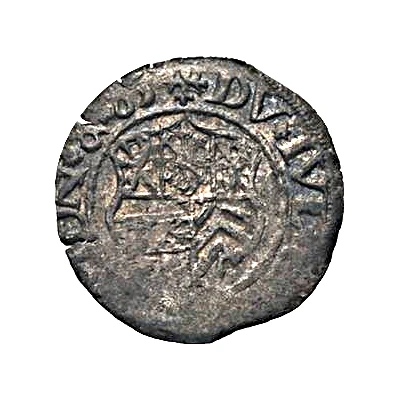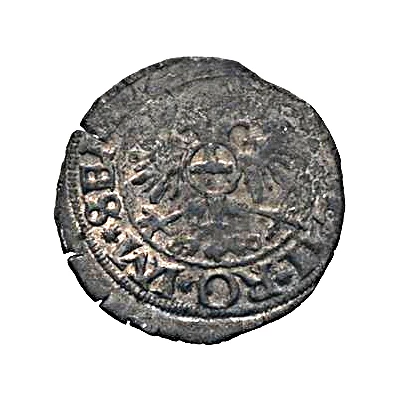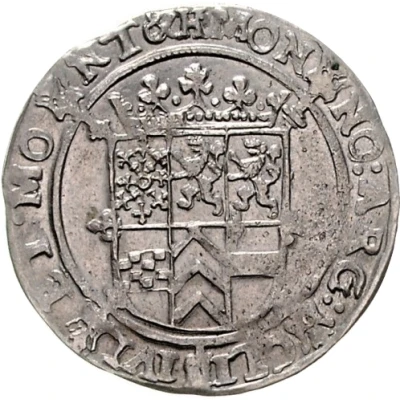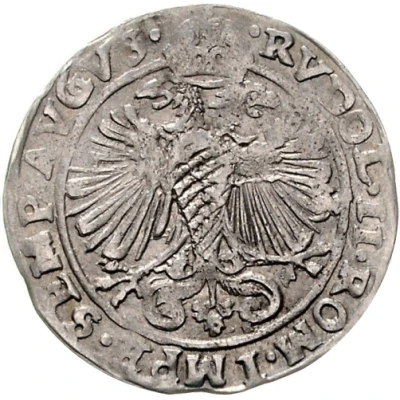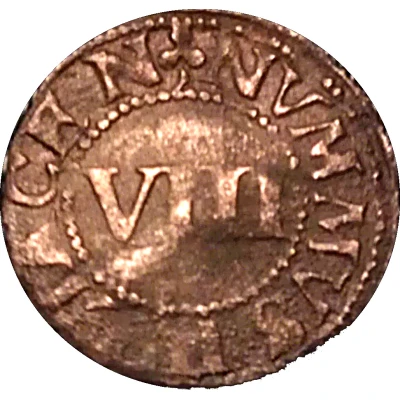
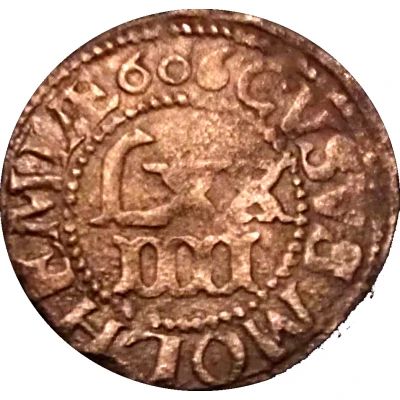

© mattei2b
8 Heller - John William I
| Silver | 0.6 g | 17 mm |
| Issuer | United duchies of Jülich-Kleve-Berg (German States) |
|---|---|
| Duke | John William (Johann Wilhelm) (1592-1609) |
| Type | Standard circulation coin |
| Years | 1604-1609 |
| Value | 8 Heller = 1 Fettmännchen (1⁄74) |
| Currency | Thaler (1521-1609) |
| Composition | Silver |
| Weight | 0.6 g |
| Diameter | 17 mm |
| Shape | Round |
| Orientation | Medal alignment ↑↑ |
| Demonetized | Yes |
| Updated | 2024-10-05 |
| Numista | N#139912 |
|---|---|
| Rarity index | 93% |
Reverse
2-line central inscription within beaded circle, legend surrounding.
Script: Latin
Lettering:
CVSVS MOLHEMIAE 606
LXX
IIII
Edge
Plain
Comment
Minted from 1592 to 1609. A specimen with a 90° offset medal strike.Jean Guillaume de Clèves (May 29, 1562 - March 25, 1609) (German: Johann Wilhelm von Kleve, Dutch: Johan Willem van Kleef), was a Duke of Cleves, Berg and Juliers, Count of La Marck and Ravensberg from 1592 to 1609, second son of William IV, Duke of Cleves, Berg, Juliers, etc., and Marie de Habsbourg, Archduchess of Austria.
When Johann William, Duke of Juliers, Cleves and Berg died on March 25, 1609, he had no legitimate heir to succeed him. Consequently, Philippe Louis de Neubourg, Duke of Neubourg, husband of his sister Anne de Clèves, and Elector John III Sigismund of Brandenburg, husband of Anne of Prussia, daughter of his other sister Marie-Éléonore de Clèves, both laid claim to the duchy.
Henry IV of France and the representatives of the United Provinces were concerned that Emperor Rudolf II might confiscate the throne of the Duchy of Juliers-Clèves-Berg. Emperor Rudolf did indeed consider adding territories to the existing Habsburg possessions in the Netherlands. In the end, troops of the Holy Roman Empire occupied the fortress of Juliers.
The War of the Juliers-Clèves Succession was one of the precursors to the Thirty Years' War.
The Treaty of Xanten (German: Vertrag von Xanten), was signed in the Rhineland town of Xanten on November 12, 1614 between Wolfgang Wilhelm, Duke of Palatinate-Neuburg and Elector John III Sigismund of Brandenburg, with representatives of England and France acting as mediators.
The treaty put an end to the War of the Juliers Succession and all hostilities between Wolfgang Wilhelm and John Sigismund. Under the terms of the treaty, the territories of Juliers, Berg and Ravenstein went to Wolfgang William, while the territories of Kleve-Marck and Ravensberg went to John Sigismund. The latter were the first Rhineland territories to come into the possession of the House of Hohenzollern, prefiguring the future Prussian Rhineland. (Source: Wikipedia)
Interesting fact
One interesting fact about the 8 Heller coin from the United Duchies of Jülich-Kleve-Berg is that it was minted during a time of great economic and political change in the region. The coin was issued during the reign of John William I, who was the Duke of Jülich-Kleve-Berg from 1604 to 1609. During his reign, the duchy experienced significant economic growth and cultural development, and the minting of this coin was likely a response to the increasing demand for currency in the region. The fact that it was made of silver also speaks to the wealth and prosperity of the region at the time.
Price
| Date | Mintage | VG | F | VF | XF | AU | UNC |
|---|---|---|---|---|---|---|---|
| 1604 | 23000 | - | - | - | - | - | - |
| 1605 | 326000 | - | - | - | - | - | - |
| 1606 | 445000 | - | - | - | - | - | - |
| 1607 | 228000 | - | - | - | - | - | - |
| 1608 | 110000 | - | - | - | - | - | - |
| 1609 | 84000 | - | - | - | - | - | - |
Values in the table are based on evaluations by sales realized on Internet platforms. They serve as an indication only for 8 Heller - John William I 1604-1609 coin.
